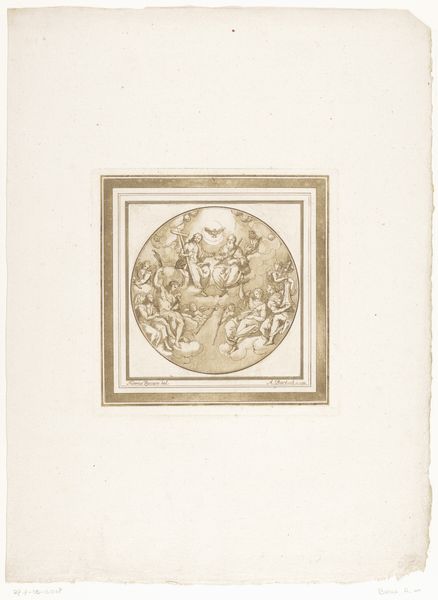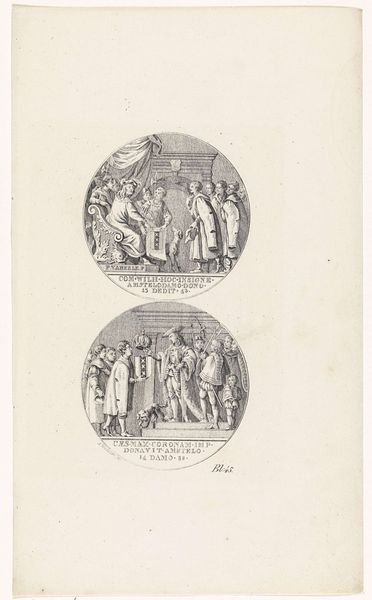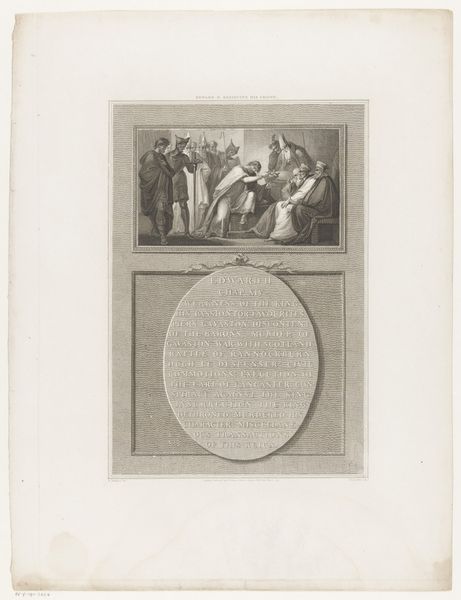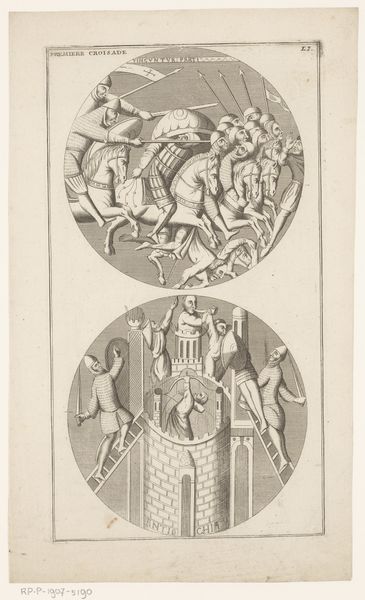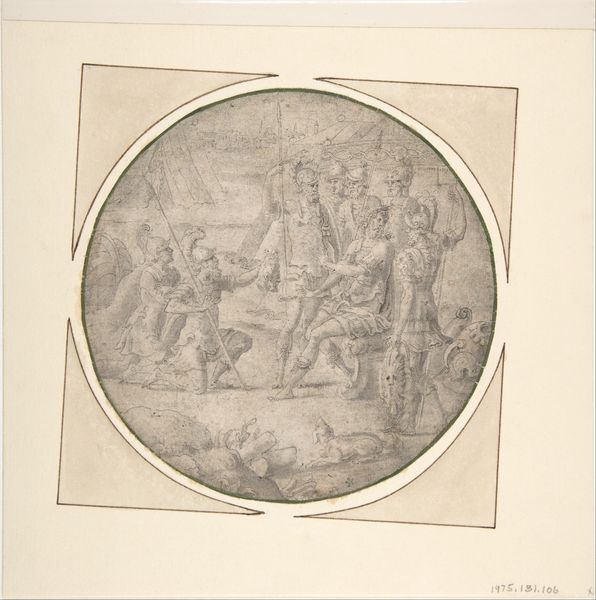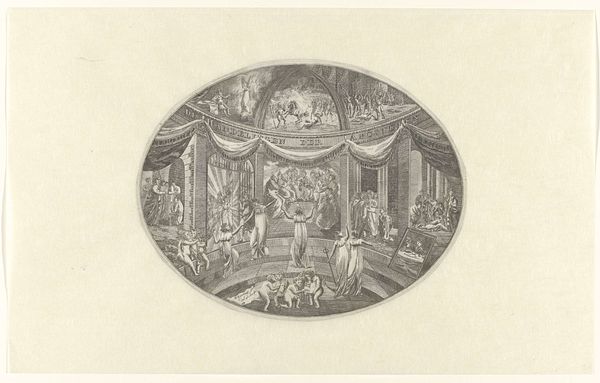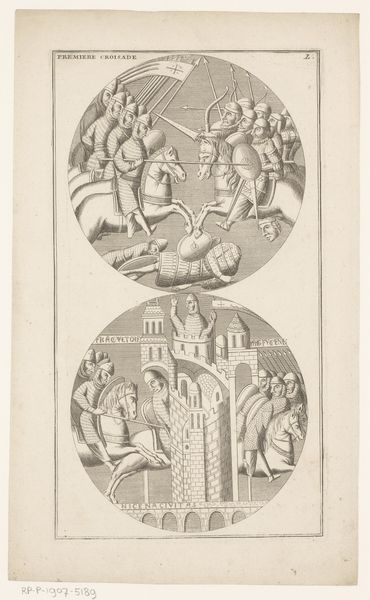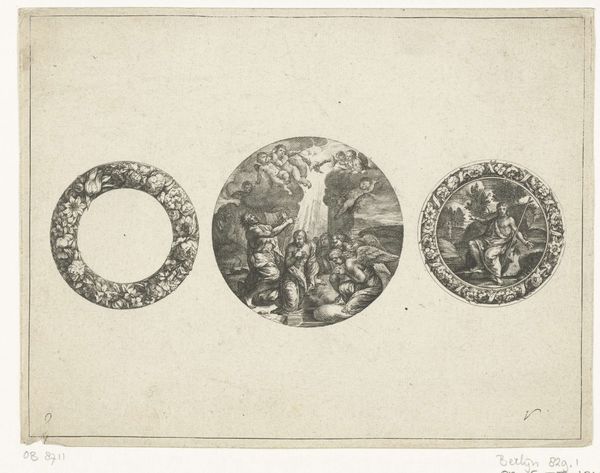
print, engraving
#
portrait
#
neoclacissism
# print
#
old engraving style
#
figuration
#
form
#
ancient-mediterranean
#
line
#
history-painting
#
engraving
#
monochrome
Dimensions: height 206 mm, width 133 mm
Copyright: Rijks Museum: Open Domain
This print, 'Gem met de gevangenname van Jugurtha', was created by Ludwig Gottlieb Portman sometime before 1828. It depicts a scene from ancient Roman history that Portman, working in the Enlightenment era, found to be politically and morally instructive. The scene represents the capture of Jugurtha, a North African king, by the Romans. This event was laden with themes of power, betrayal, and the clash of civilizations. Portman, like many artists of his time, was interested in how classical narratives could reflect contemporary issues of governance and morality. This interest was fueled by an era of revolution and shifting social structures. What I find compelling is how Portman uses a gem-like format. Gems were historically symbols of power and status, often used by rulers. By depicting this scene in that medium, Portman asks us to consider how power is negotiated, displayed, and ultimately, how it corrupts. He prompts us to reflect on the human cost of such conflicts and the legacy they leave behind.
Comments
No comments
Be the first to comment and join the conversation on the ultimate creative platform.


